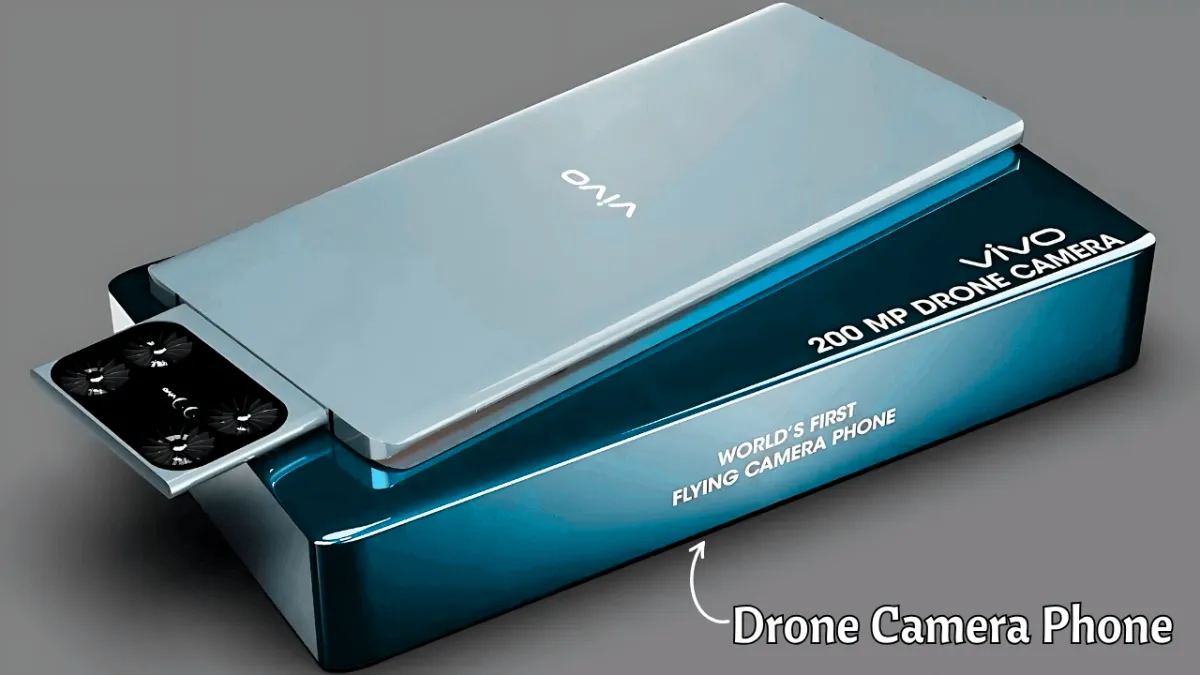Vivo is reportedly working on a revolutionary fVivo Flying Drone Camera Phone concept that integrates a miniature drone camera module inside the phone body. Patent filings and concept designs have surfaced online, showing how this self-flying camera could detach from the top of the phone and hover independently to take aerial selfies, 360° videos, and shots from dynamic angles. While not officially confirmed, this Vivo Flying Phone represents the next frontier of mobile photography, blending drones with smartphones for the first time in a truly integrated form.
Integrated Drone Camera: How It Works
According to leaked patent diagrams, the phone features a retractable camera system stored within a modular bay on top of the phone. When activated, the drone camera pops out and lifts off, using four mini propellers to hover. The tiny drone is expected to include multiple sensors, possibly including a wide-angle lens, ToF sensor, and object tracking AI, allowing it to intelligently frame subjects, follow the user, or take panoramic shots from above. The system may be controlled directly via the smartphone interface or gestures.
Expected Display and Design Features
The Vivo Flying Phone is likely to feature a full-view bezel-less AMOLED display, possibly 6.9 inches or larger, with no notch or punch-hole thanks to the drone replacing the traditional selfie camera. The device would have an aluminum or titanium alloy frame for structural strength and likely include under-display fingerprint scanning and in-display speaker tech to keep the front clean and futuristic.
AI Integration and Smart Controls
Vivo’s concept emphasizes AI-powered controls, allowing users to summon the drone camera, select flight presets, and even use voice commands or gestures to take selfies. The drone may also support AI stabilization, object tracking, auto-zoom, and cinematic flyover modes. It could open new possibilities for vlogging, creative photography, and 3D scanning—especially useful for content creators and social media influencers.
Battery and Safety Concerns
Vivo may use a dual-battery system—one for the phone and another for the drone module to ensure balanced usage. The flying camera would return to its dock when battery is low, and safety mechanisms like collision avoidance, auto-landing, and return-to-home functions are expected to be part of the design. Wireless charging and ultra-fast wired charging (over 100W) will likely be included.
Launch Status and Market Potential
As of now, this is a concept phone, and Vivo hasn’t officially confirmed a release date. However, the patents and viral renders have sparked speculation that a limited-edition prototype or concept demo could be showcased in late 2025 or early 2026. If commercialized, it would be a world-first in drone-integrated smartphones, setting Vivo apart as a futuristic innovator.
Read More:
- Redmi Note 13 Pro+ Brings Flagship Design and Performance to the Mid-Range Segment
- Oppo K13 Ultra 5G Officially Unveiled – Stunning AMOLED Display, Flagship Camera & Snapdragon Power
- OnePlus 5G Smartphone with Flagship Performance and Premium Design
- Vivo Premium 5G Smartphone – Stunning Design, Flagship-Level Camera, and Smooth Performance
- Redmi Note 88 Ultra 5G Officially Unveiled – 200MP Camera, Snapdragon Flagship Chipset, and Premium Design Under Budget





